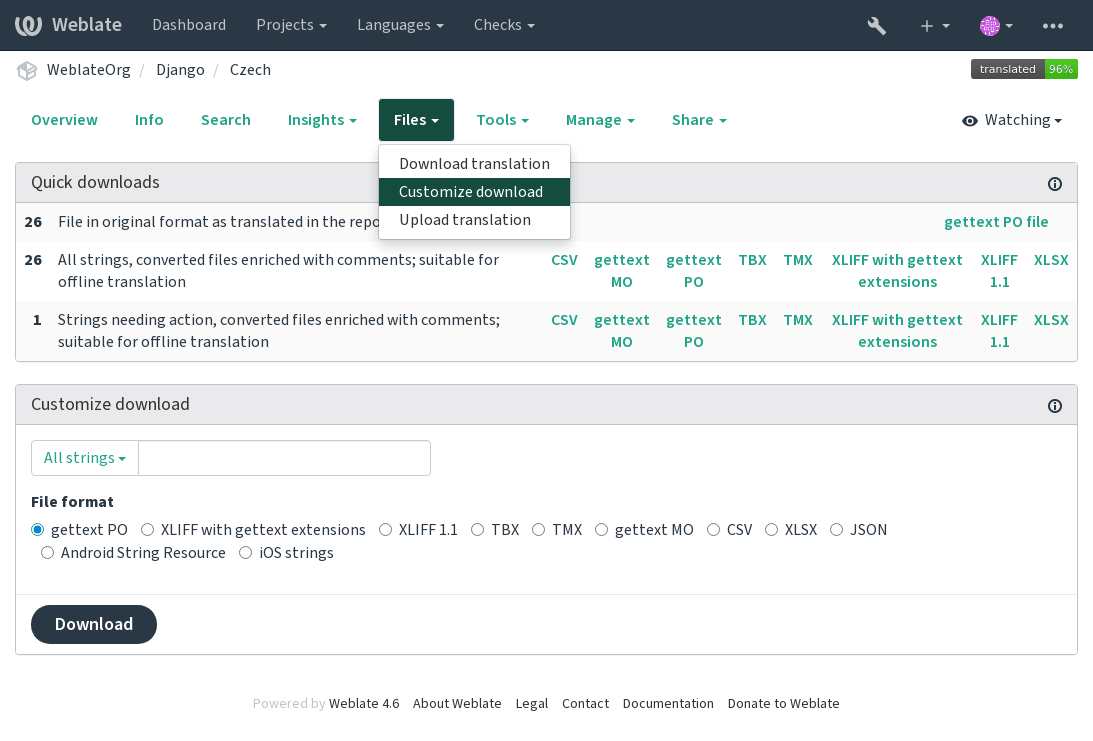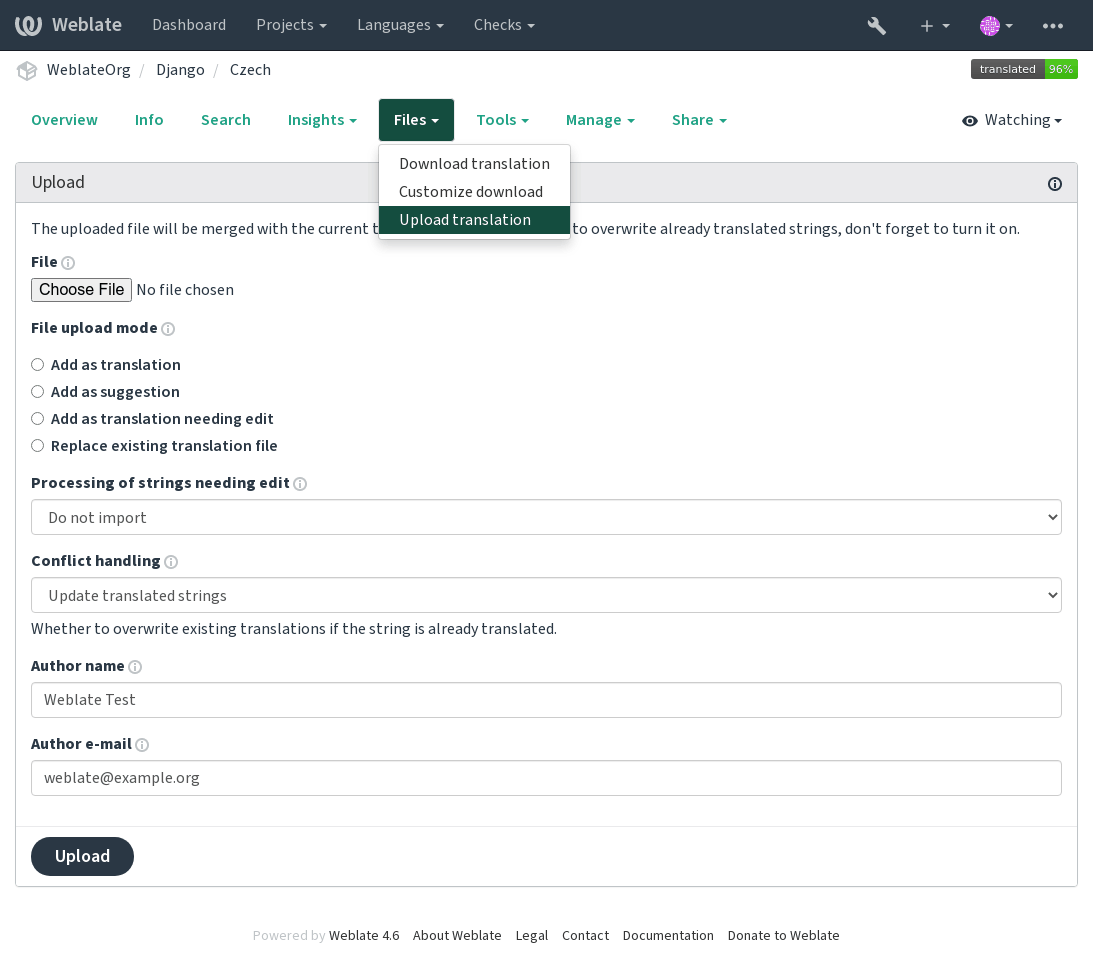Descargar y cargar traducciones¶
You can export files from a translation, make changes, and import them again. This allows working offline, and then merging changes back into the existing translation. This works even if it has been changed in the meantime.
Nota
Available options might be limited by access control settings.
Descargar traducciones¶
From the project or component dashboard, translatable files can be downloaded in the Files menu.
The first option is to download the file in the original format as it is stored in the repository. In this case, any pending changes in the translation are getting committed and the up-to-date file is yield without any conversions.
You can also download the translation converted into one of the widely used localization formats. The converted files will be enriched with data provided in Weblate; such as additional context, comments or flags. Several file formats are available via the Files ↓ Customize download menu:
PO de gettext
XLIFF con extensiones gettext
XLIFF 1.1
TermBase eXchange
Translation Memory eXchange
MO de gettext
CSV
Open XML de Excel
JSON
Recurso de cadenas de Android
Cadenas de iOS

Cargar traducciones¶
Cuando haya efectuado sus cambios, utilice Cargar traducción en el menú Archivos.

Formatos de archivo admitidos¶
Es posible cargar archivos en cualquier formato compatible, pero aun así se recomienda utilizar el mismo formato de archivo que el utilizado para la traducción; de lo contrario, algunas funciones podrían no convertirse apropiadamente.
Ver también
El archivo cargado se combina con el del repositorio para actualizar la traducción, de manera predeterminada sobrescribiendo las entradas existentes (en el diálogo de carga se puede activar o desactivar este comportamiento).
Métodos de importación¶
Estas son las elecciones presentadas al cargar archivos de traducción:
- Añadir como traducción (
translate) Las traducciones importadas se añaden como traducciones adicionales. Este constituye el caso de uso más común y es el comportamiento predeterminado.
- Añadir como sugerencia (
suggest) Las traducciones importadas se añaden como sugerencias. Recomendado si quiere que otros revisen lo que se ha cargado.
- Añadir como traducción que requiere edición (
fuzzy) Imported translations are added as translations needing edit. This can be useful when you want translations to be used, but also reviewed.
- Reemplazar archivo de traducción existente (
replace) Existing file is replaced with new content. This can lead to loss of existing translations, use with caution.
- Actualizar cadenas de origen (
source) Updates source strings in bilingual translation file. This is similar to what Actualizar archivos PO para que coincidan con POT (msgmerge) does.
Solo determinados formatos de archivo admiten esta opción.
- Añadir cadenas nuevas (
add) Adds new strings to the translation. It skips the one which already exist.
In case you want to both add new strings and update existing translations, upload the file second time with Add as translation.
Esta opción está disponible solo cuando se activa Gestionar cadenas.
Conflicts handling¶
Define el tratamiento que recibirán las cadenas cargadas que ya estén traducidas.
Strings needing edit¶
There is also an option for how to handle strings needing edit in the imported file. Such strings can be handle in one of the three following ways: «Do not import», «Import as string needing edit», or «Import as translated».
Overriding authorship¶
With admin permissions, you can also specify authorship of uploaded file. This can be useful in case you’ve received the file in another way and want to merge it into existing translations while properly crediting the actual author.